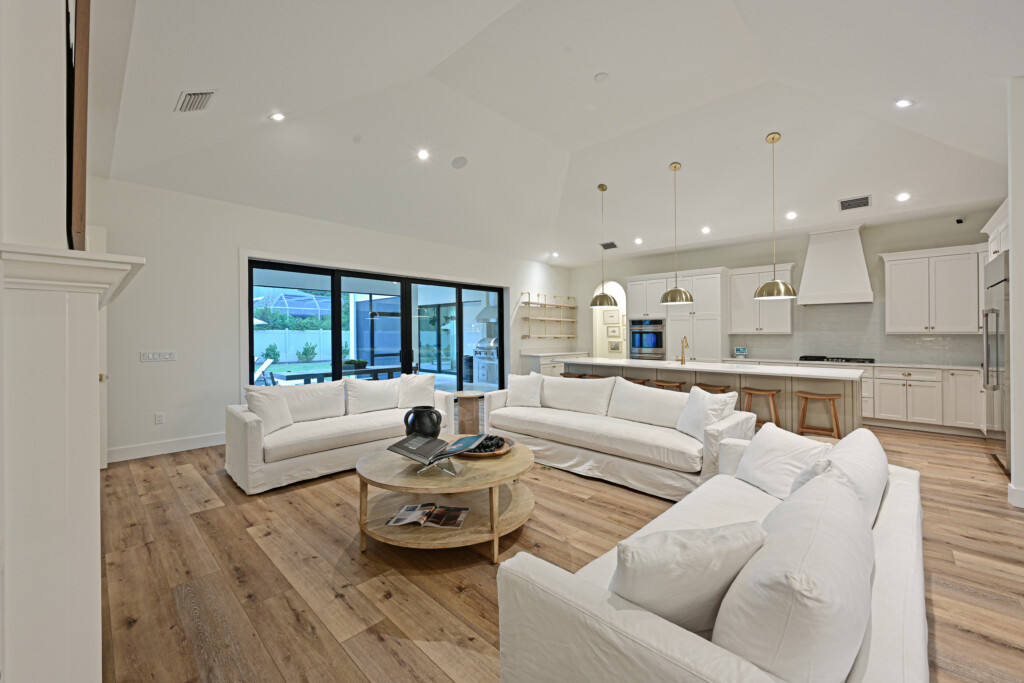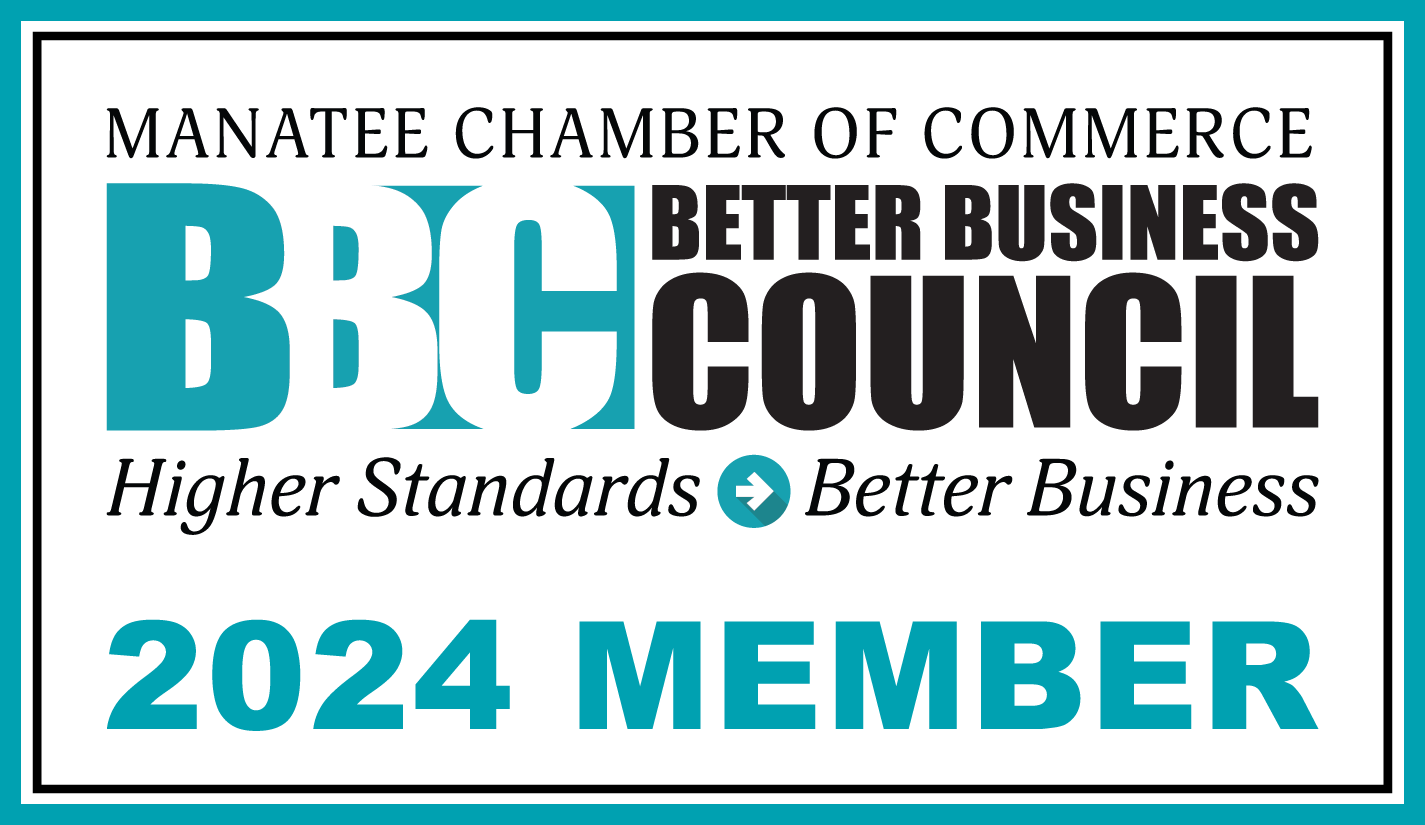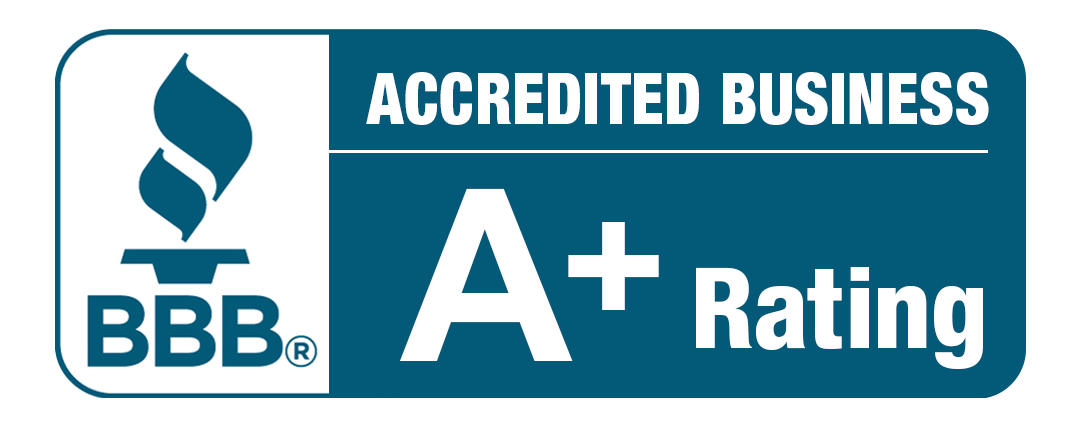According to AARP, Florida is the top retirement destination in the country, with approximately 77,000 seniors moving to the state annually. When seniors retire in the Sunshine State and build a new custom home, they often require ADA-compliant modifications to live a safe and happy lifestyle. Ensuring that the home is accessible not only enhances the quality of life for residents but also ensures that the home is welcoming for all visitors. Remember: Even if retirees are currently healthy and mobile, incorporating these features into their retirement homes ensures that they are ready for whatever the future may bring. ADA standards accommodate individuals with mobility, vision, hearing, and cognitive impairments.

Key ADA-Compliant Features to Consider for a Retirement Home
- Wider Doorways and Hallways: One of the most fundamental changes you can make for ADA compliance is ensuring that doorways and hallways are wide enough to accommodate wheelchairs and other mobility devices.
- Zero-Step Entryways: A zero-step entry, or barrier-free entry, is essential for wheelchair access. Instead of steps at the front or back of the home, a gentle ramp or sloped pathway allows easy access for all residents and guests. In Florida, where rain can be frequent, it’s also important to ensure the entryway remains slip-resistant by using materials like textured stone or rubber.
- Accessible Bathroom Design: The bathroom is a key area for ADA compliance, as it requires special attention to both functionality and comfort. The following features may be included:
- Roll-in Showers: A roll-in shower with a curbless entry allows individuals in wheelchairs to access the shower without assistance. Shower seats and grab bars should also be installed for safety.
- Grab Bars: Install grab bars near the toilet, shower, and tub to provide additional support and prevent falls. These bars should be sturdy and positioned at the correct height.
- Lowered Sinks and Countertops: Lowered countertops and sinks ensure that individuals using wheelchairs can comfortably reach them.
- Accessible Toilets: Toilets should have enough space around them to allow easy transfers from a wheelchair.
- Lever-Style Door Handles and Faucets: Traditional round doorknobs and faucet handles can be difficult to operate for individuals with limited hand strength or dexterity. Replacing these with lever-style handles makes them easier to operate. Lever-style handles are particularly useful in kitchens and bathrooms, where frequent use is required. This small change can significantly improve the ease of use throughout the home.
- Wide, Accessible Kitchen Design: In the kitchen, ADA compliance focuses on maximizing functionality and maneuverability. Features to include are:
- Lowered Countertops and Cabinets: Lowering counters and adding pull-out shelves and drawers make storage more accessible.
- Accessible Appliances: Installing appliances that are easier to use, such as ovens with side-opening doors, refrigerators with French doors, and dishwashers with pull-out racks.
- Clear Floor Space: Ensure that there is enough clear floor space for wheelchair users to maneuver comfortably.
- Enhanced Lighting: Good lighting is essential for individuals with vision impairments. In addition to providing ample natural light, adjustable, glare-free lighting that can be controlled easily. Ensure all light switches are installed at an accessible height, and install motion-sensor lighting in hallways or bathrooms to provide added convenience and safety.
- Smart Home Features: Incorporating smart home technology can greatly benefit individuals with mobility or cognitive impairments. Automated systems that control lighting, temperature, and even window coverings provide greater independence. Voice-activated assistants can be used to operate devices, providing even more accessibility. Smart thermostats, smart locks, and automated doors all add layers of convenience and accessibility for those who may find traditional manual systems difficult to use.
- Non-Slip Flooring: Flooring materials like textured ceramic tile, cork, rubber, or low-pile carpeting provide a safer environment for people with limited mobility or balance issues. In the kitchen, bathroom, and entry areas, it’s especially important to choose materials that are both aesthetically pleasing and functional in preventing falls.
- Elevator or Lift for Multi-Story Homes: If you are building a multi-story custom Florida home, consider installing an elevator or a residential lift. This can provide easier access between floors for individuals with mobility impairments, eliminating the need for stairs and making the entire home more accessible. Elevators can be designed to blend seamlessly into the home’s aesthetic while offering the functionality needed.
- Outdoor Accessibility Features: Outdoor spaces can incorporate features such as wider walkways, ramps, and patios that are easily navigable by individuals using mobility devices. Outdoor furniture should be arranged to allow for easy access, and shaded areas can provide a respite from the Florida heat. Accessible outdoor pathways leading to gardens, pools, or other amenities can make the entire property more enjoyable for everyone.
Bruce Williams Will Build the Home You Need
Designing an ADA-compliant Florida retirement home involves thoughtful planning – but incorporating ADA-compliant features will allow the home to provide a lifestyle without barriers.
Bruce Williams Homes has been building custom properties for over 50 years. We have earned a strong reputation for meeting our clients’ unique needs and delivering a home that exceeds expectations.
According to AARP, Florida is the top retirement destination in the country, with approximately 77,000 seniors moving to the state annually. When seniors retire in the Sunshine State and build a new custom home, they often require ADA-compliant modifications to live a safe and happy lifestyle. Ensuring that the home is accessible not only enhances the quality of life for residents but also ensures that the home is welcoming for all visitors. Remember: Even if retirees are currently healthy and mobile, incorporating these features into their retirement homes ensures that they are ready for whatever the future may bring. ADA standards accommodate individuals with mobility, vision, hearing, and cognitive impairments.

Key ADA-Compliant Features to Consider for a Retirement Home
- Wider Doorways and Hallways: One of the most fundamental changes you can make for ADA compliance is ensuring that doorways and hallways are wide enough to accommodate wheelchairs and other mobility devices.
- Zero-Step Entryways: A zero-step entry, or barrier-free entry, is essential for wheelchair access. Instead of steps at the front or back of the home, a gentle ramp or sloped pathway allows easy access for all residents and guests. In Florida, where rain can be frequent, it’s also important to ensure the entryway remains slip-resistant by using materials like textured stone or rubber.
- Accessible Bathroom Design: The bathroom is a key area for ADA compliance, as it requires special attention to both functionality and comfort. The following features may be included:
- Roll-in Showers: A roll-in shower with a curbless entry allows individuals in wheelchairs to access the shower without assistance. Shower seats and grab bars should also be installed for safety.
- Grab Bars: Install grab bars near the toilet, shower, and tub to provide additional support and prevent falls. These bars should be sturdy and positioned at the correct height.
- Lowered Sinks and Countertops: Lowered countertops and sinks ensure that individuals using wheelchairs can comfortably reach them.
- Accessible Toilets: Toilets should have enough space around them to allow easy transfers from a wheelchair.
- Lever-Style Door Handles and Faucets: Traditional round doorknobs and faucet handles can be difficult to operate for individuals with limited hand strength or dexterity. Replacing these with lever-style handles makes them easier to operate. Lever-style handles are particularly useful in kitchens and bathrooms, where frequent use is required. This small change can significantly improve the ease of use throughout the home.
- Wide, Accessible Kitchen Design: In the kitchen, ADA compliance focuses on maximizing functionality and maneuverability. Features to include are:
- Lowered Countertops and Cabinets: Lowering counters and adding pull-out shelves and drawers make storage more accessible.
- Accessible Appliances: Installing appliances that are easier to use, such as ovens with side-opening doors, refrigerators with French doors, and dishwashers with pull-out racks.
- Clear Floor Space: Ensure that there is enough clear floor space for wheelchair users to maneuver comfortably.
- Enhanced Lighting: Good lighting is essential for individuals with vision impairments. In addition to providing ample natural light, adjustable, glare-free lighting that can be controlled easily. Ensure all light switches are installed at an accessible height, and install motion-sensor lighting in hallways or bathrooms to provide added convenience and safety.
- Smart Home Features: Incorporating smart home technology can greatly benefit individuals with mobility or cognitive impairments. Automated systems that control lighting, temperature, and even window coverings provide greater independence. Voice-activated assistants can be used to operate devices, providing even more accessibility. Smart thermostats, smart locks, and automated doors all add layers of convenience and accessibility for those who may find traditional manual systems difficult to use.
- Non-Slip Flooring: Flooring materials like textured ceramic tile, cork, rubber, or low-pile carpeting provide a safer environment for people with limited mobility or balance issues. In the kitchen, bathroom, and entry areas, it’s especially important to choose materials that are both aesthetically pleasing and functional in preventing falls.
- Elevator or Lift for Multi-Story Homes: If you are building a multi-story custom Florida home, consider installing an elevator or a residential lift. This can provide easier access between floors for individuals with mobility impairments, eliminating the need for stairs and making the entire home more accessible. Elevators can be designed to blend seamlessly into the home’s aesthetic while offering the functionality needed.
- Outdoor Accessibility Features: Outdoor spaces can incorporate features such as wider walkways, ramps, and patios that are easily navigable by individuals using mobility devices. Outdoor furniture should be arranged to allow for easy access, and shaded areas can provide a respite from the Florida heat. Accessible outdoor pathways leading to gardens, pools, or other amenities can make the entire property more enjoyable for everyone.
Bruce Williams Will Build the Home You Need
Designing an ADA-compliant Florida retirement home involves thoughtful planning – but incorporating ADA-compliant features will allow the home to provide a lifestyle without barriers.
Bruce Williams Homes has been building custom properties for over 50 years. We have earned a strong reputation for meeting our clients’ unique needs and delivering a home that exceeds expectations.






